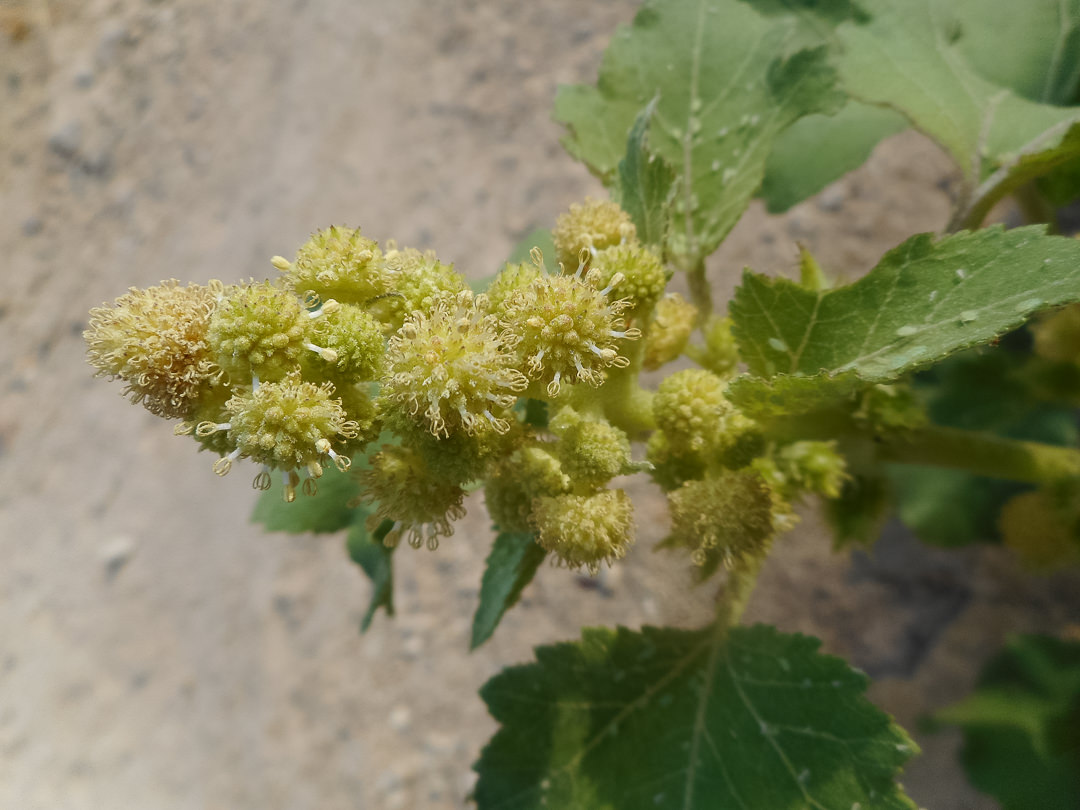(Alt: )

native herbaceous
Distribution: South Boise, Foothills, Lucky Peak, Greenbelt, West Valley
USDA Plants Link: Xanthium strumarium (XAST)
Flora of North America Link: Xanthium strumarium
Wildflower walks along the Boise Front

USDA Plants Link: Xanthium strumarium (XAST)
Flora of North America Link: Xanthium strumarium
The much-maligned cocklebur (Xanthium strumarium), bane to owners of long-haired dogs, is nevertheless a fascinating plant worth a closer look. It might not look much like a sunflower (other than the leaves), a dandelion, pearly everlasting, or a thistle (other than the spiny bracts), which admittedly don’t look much like each other. Nevertheless, all belong to the Asteraceae family, an exceptionally large plant family characterized by a complex floral morphology in which the apparent “flower” is actually comprised of (usually) numerous, highly reduced individual florets. The cocklebur goes even further in its weirdness, encapsulating a pair of female florets in a protective casing that is wonderfully designed to get its seeds to a suitable wet spot where the next generation can thrive. For an excellent discussion of the details, see Understanding the Cocklebur, at “In Defense of Plants”.
The success of the cocklebur’s strategy is evident in its distribution, which is so widespread as to make the terms native vs. non-native arbitrary and irrelevant. You should nevertheless be careful where you discard any burs removed from socks or fur; otherwise, you may unintentionally be doing thy master’s bidding. In addition to their high nuisance factor, all parts of the cocklebur are toxic to eat, and the species is accordingly on several states’ noxious weed list, in spite of being native (probably). Fortunately, appropriately wet habitats in the Boise Front are too sparse for cockleburs to be a significant problem, and their wonderfully bizarre fruit should earn them at least a grudging level of tolerance in the rich kaleidoscope of local biodiversity.